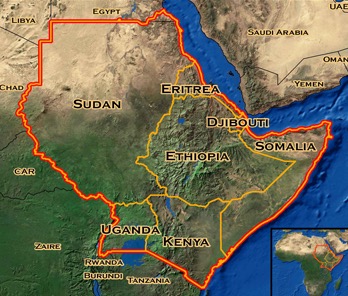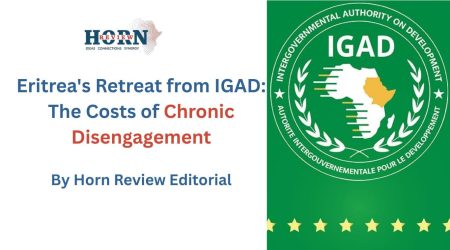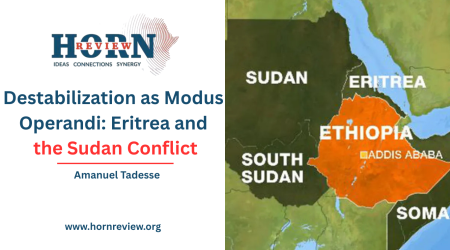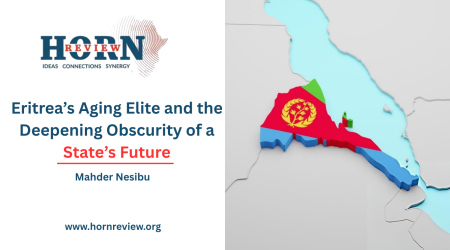
21
Apr
Breaking Borders in the Horn: Digital Diplomacy and SADC’s Visa-Free Transformation
The reconfiguration of cross-border mobility across the African continent has shown the Southern African Development Community (SADC) to be a regional pace-setter. Recent high-level strategic dialogues, particularly held on 12 February 2025, at the margins of the jointly organized 38th African Union Summit, have highlighted a decisive turn towards the removal of visa impediments. SADC Member States are thus harmonizing their policies with the African Union Protocol which has provisions on the rights of entry, residence, and establishment. They are also attempting to navigate their way into an upcoming new economic order, one that could see a very different architecture of economic integration and regional sovereignty emerge.
The momentum of SADC is reflected in its multilayered constructs. Several Member States have already established broad visa waiver regimes. Such examples are: fully waiving visa requirements for all SADC partner states including Mauritius, Seychelles, and Zimbabwe while more than 10 SADC partner states have been exempted from visa restrictions in countries such as Angola, Botswana, Lesotho, Madagascar, Malawi, Eswatini, Mozambique, Namibia, South Africa, United Republic of Tanzania and Zambia. Even the Democratic Republic of Congo, which took a more cautious approach, nonetheless exempted citizens of five neighboring countries. Such measures are complemented by operational reforms, including one-stop border posts, simplified visa regimes, and bilateral agreements, such as the one between Botswana and Namibia that enables citizens to cross borders using national identity documents. Such pragmatic measures are doubly effective, as they not only take down some bureaucratic friction but also indicate a wider political commitment to start chipping away at colonial legacy in terms of border rigidity.
These initiatives are intertwined with a grand vision of a visa-free Africa echoing long-standing calls for pan-African integration and freedom from economic dependence. The abolition of visa limitations is considered a driver-boosting trade, an investment stimulant, and a groundwork for a more active regional job market. These emerging approaches are taking shape at a moment when African leaders, working with institutions such as the African Union (AU) and African Development Bank (AfDB), are energetically pushing for cross-cutting policies with multiscale reach across the population. In this context, SADC’s forward-looking practices are not isolated experiments, but foundational building blocks of a wider continental turnaround.
The SADC model offers a natural point of comparison with the European Union’s Schengen Area a model for facilitating cross-border movement, which has been the foundation of European integration for decades. Whereas the Schengen construct comes equipped with a well-established legal framework, sophisticated political institutions, and data-sharing systems, SADC’s undertaking is embryonic but revolutionary. There is much in the European experience that offers instructive lessons. Firstly, it is the balanced approach between security imperatives and free movement which is made possible through meticulous regulation and real-time information sharing. Second, the future of visa liberalization in Europe is now closely tied to the political will of the EU member states to cede some aspects of national sovereignty for the sake of collective security and economic prosperity. With its heterogeneous blend of political systems and developmental trajectories, SADC can draw lessons from the above analysis by investing in digital infrastructure and aligning its legal frameworks to ensure that the drivers of visa-free mobility do not compromise state security.
Some African states provide important case studies beyond SADC. As an example outside of the SADC bloc, Ghana has actively and bilaterally pursued agreements that are conducive to regional mobility. Ghana’s policy trajectory demonstrates that visa liberalization needs to be nested into infrastructure improvement and aligned with a coherent and comprehensive agenda of legal reforms. Its moves illustrate that visa-free travel is not just a matter of policy, but also of intergovernmental trust and business incentives. These and similar models, if contextualized and scaled in the context of SADC, could fast-track regional integration and diversify a more resilient and responsive economic landscape for both domestic and global challenges.
Another experience from the Horn of Africa demonstrates how visa-free has the potential to transform regional dynamics. Kenya, for example, has led a pilot along its border with Ethiopia that combines digital diplomacy with more traditional border management. At strategic crossing points for instance the Nairobi-Dodola corridor the introduction of a digital visa validation system has transformed cross-border movement. Jointly developed with Ethiopian authorities and funded via targeted regional development funding, this system uses biometric verification and real-time data sharing to streamline border procedures. Thanks to its successful execution, the initiative was able to decrease waiting times, enhance security measures, and allow trade to flow between the two countries more quickly. These digital innovations act as real-world manifestations of how technology may be used to align the interests of security and economic openness, providing a template for others in the Horn of Africa to follow.
The political importance of these developments is complex. The progressive dismantlement of visa obstacles stands, for one thing, as a break from the historically insular strategies that have been the hallmark of many African States. It is a sign of a more integrated and collaborative future, one in which national interests are more aligned to regional prosperity. On a different level, these policies highlight the complex relationship between state sovereignty and supranational aims. Yet SADC’s contribution to a visa-free Africa should achieve a careful balance among genuine security concerns, divergent levels of administrative capacity, and the inevitable desire to shield national borders.
However, they are not without their challenges. Inherently divergent national interests, the variability of infrastructural capabilities, and lingering security concerns call, instead, for a calibrated, phased approach. Successful bilateral arrangements like the mutual acceptance of identity documents between Botswana and Namibia should be extrapolated very cautiously to a wider pan-African context. Given these complexities, a range of policy recommendations should be considered. Because you will need the harmonization of visa policies to go with all of this, so first step, maybe you need to have the African Mobility Authority, because the harmonization here should be driven by the Authority otherwise it would not make sense, hence AAC should ensure this. Second, investment in a continental-scale digital visa platform could revolutionize border management at scale, making the tracking of individuals faster and easier with secure, real-time sharing of data among national security agencies. Third, the phased implementation approach coupled with pilot projects in select corridors would enable policymakers to gauge whether visa-free measures were working as intended or if they needed to be tweaked, based on real-world feedback.
So, fiscal reforms are necessary too. Also, waiving or cutting visa fees would eliminate major economic obstacles to mobility and enhance grassroots socio-economic engagement. Targeted capacity-building programs for border officials are also important. Training efforts should help prepare the workforce with the necessary skills to manage increased cross-border traffic efficiently and securely. The establishment of cross-border economic zones and regional trade corridors can be practical laboratories for the full consequences of visa liberalization, establishing a synergy of economic expansion and free movement.
So taken together these measures demonstrate that the visa-free agenda is less a uniform policy shift than a multifactor strategy that interconnects digital innovation, political cooperation, and economic reform. The SADC approach is shaped by historical lessons learned from Ghana, the Horn of Africa, and the European Union, and reflects a true political commitment to redefining the borders that have separated the continent for so long. With an approach that combines both traditional forms of diplomatic engagement and the latest in digital solutions, African countries are well-positioned to reframe visa restrictions from challenges into opportunities; from borders that represent barriers to the proliferation of development, innovation, and up-and-coming opportunities for prosperity.










